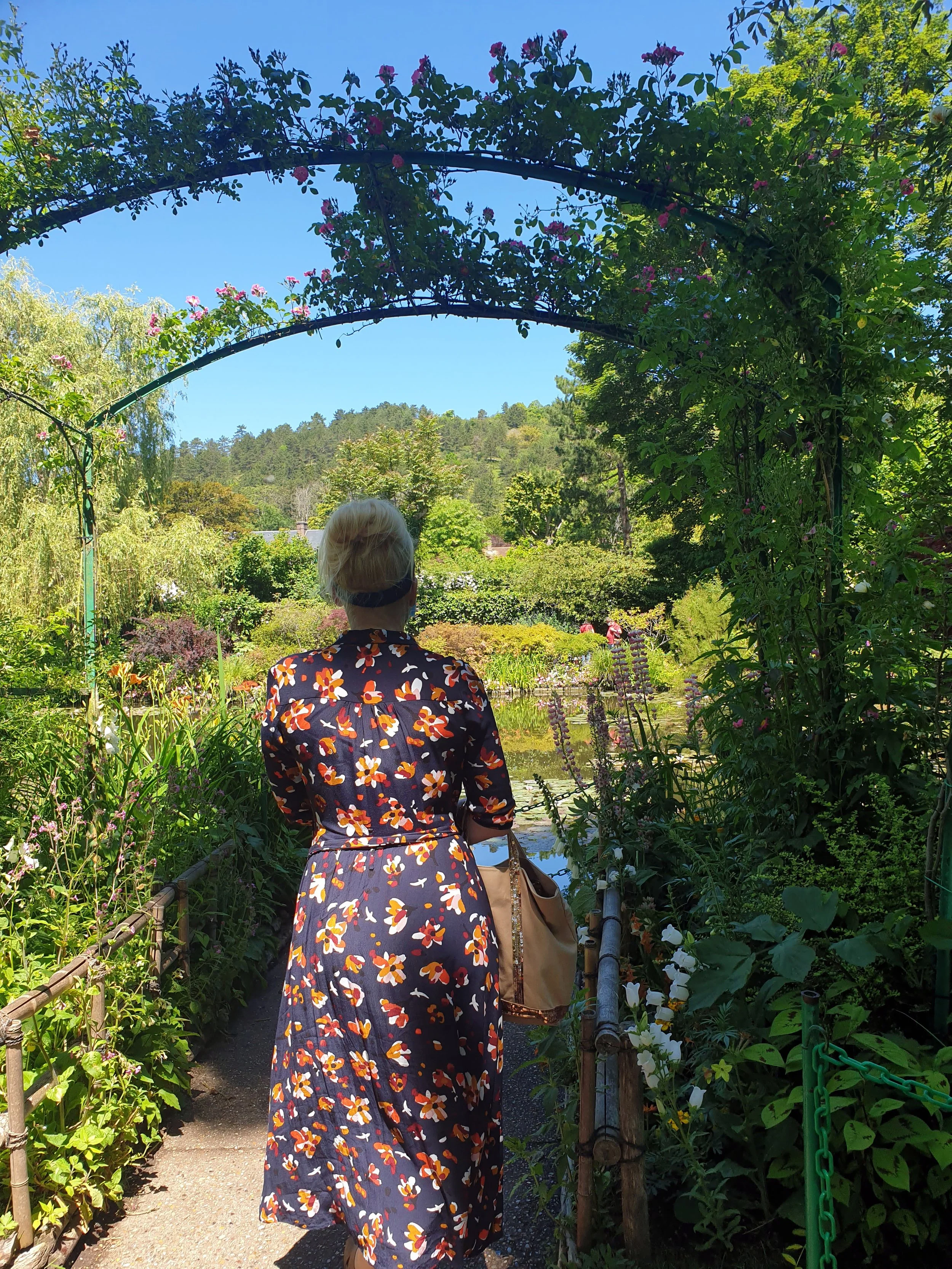Giverny, forever immortalized by Claude Monet, remains a source of inspiration to artists with its beauty and timelessness.
While only 50 miles away from Paris, in Normandy, Giverny provides a tranquil break from the city. Though Monet’s paintings throughout his career show his attraction to green spaces, his time at Giverny gave him full creative expression, as he took control over both the horticulture of the grounds, as well as paintings. He lived in Giverny for the latter half of his life, buying the property after seven years of renting, and cultivated two prominent gardens, the Clos Normand which is the garden closest to his house and the Japanese inspired Water Garden with the famous bridge overlooking the water lilies.
The colorful space Monet created,
produced over twenty years of work, include some of his most iconic series such as the Water Lilies in which he painted over 250 versions of this scene based on the passing of time. The gardens served to become a precious subject to Impressionists, gaining a following known as the so-called Giverny Colony. This group contained artists Willard Metcalf, Louis Ritter, Theodore Wendel, and John Leslie Breck.
Today acclaimed Fabienne Delacroix pays tribute with her new series recreating and imagining 19th century life in Giverny.
“The magic of her palette of colours, her attention to detail, her masterful skill in drawing and the delicate touches by which she composes her scenes give her works a freshness and poetry that are peculiar to them.”
While often associated with Naive art, a category of art defined as turning away from insincere sophistication usually made by artists with no formal training in art school, Fabienne Delacroix’s works contain compositional and narrative elements defying that categorization. The collections director of the International Museum of Naive Art of Magoc, which holds two of Fabienne’s pieces, Michel Forest comments on how her works hold an elegance and mastery of painting skills which split from the more traditional Naive painting masters. This elegance can be attributed to her interest with Impressionist art.
The way Fabienne treats light and sets her composition favors that of Impressionist aesthetic. Furthermore, her new series Giverny, which represents the passing through the four seasons with four paintings of Monet’s house and the Clos-Normand Garden alludes to Monet’s study of time passing seen in his Haystack series, depictions of Rouen Cathedral and the house of Parliament, and Water Lilies. Yet while Monet presented his subject from the same angle for his studies, Fabienne changed the angle of her pieces. We further see her ties to Naive art when presenting her paintings as individual stories on equal footing.
Fabienne Delacroix. Giverny , le printemps . Acrylic on Board. 18 x 21.5 in
Giverny, Spring, offers a view of the garden under the evening rain with couples hurriedly passing under the arches to the safety and warmth of the house or away, perhaps towards a carriage.
As Fabienne mentions, this scene was inspired
especially in its linear treatment of rain, by Hiroshige’s Sudden Shower over Shin-Ōhashi, whose prints Monet also admired and collected. In fact, Monet’s home contained over 200 Japanese engravings and prints.
Fabienne Delacroix. Giverny, l’été. Acrylic on Board. 18 x 21.5 in
Giverny, Summer gets closer to the house and depicts a festive outdoor lunch or perhaps early dinner, with blooming flowers and vibrant irises. In the foreground, slightly to the left, one can spot a young woman in a dark dress walking towards the table: could she be Suzanne Hoschedé, Monet’s stepdaughter and model who posed in the same dress for several photographs?
Fabienne Delacroix. Giverny, l’automne. Acrylic on Board. 18 x 21.5 in
Giverny, Fall imagines an afternoon picnic during an Indian summer, with the large family enjoying the last warm rays of the sun and taking in the falling of the golden leaves. It also shows us a painter, probably Monet himself concentrating, closely observed by viewers.
Fabienne Delacroix. Giverny, l’hiver. Acrylic on Board. 18 x 21.5 in
Giverny, Winter, brings us closer to what many highly anticipate: the snowfall, the arrival of the Holiday season, a chance to meet family and friends. Here, Fabienne concentrates on the pleasurable aspects of the season: the crisp bright blue air, the warmth of the chimney smoke, a carriage signaling the arrival of someone.
Each of Fabienne’s works are a small universe
that offer itself to us and invite the viewers to dialogue with and spend time with her characters. She recreates an intimate space that connects the viewer to the past and continues the timeless interest and intrigue of life and beauty which exist at Giverny.












